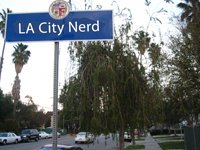From the firsthand account of Harris Newmark:
About the twenty-first of October a “war” broke out near Nigger Alley between two rival factions of the Chinese on account of the forcible carrying off of one of the companies' female members, and the steamer California soon brought a batch of Chinamen from San Francisco, sent down, it was claimed, to help wreak vengeance on the abductors. On Monday, October 23d some of the contestants were arrested, brought before Justice Gray and released on bail. It was expected that this would end the trouble; but at five o'clock the next day the factional strife broke loose again, and officers, accompanied by citizens, rushed to the place to attempt an arrest. The Chinese resisted and Officer Jesus Bilderrain was shot in the right shoulder and wrist, while his fifteen-year-old brother received a ball in the right leg. Robert Thompson, a citizen who sprang to Bilderrain's assistance, was met by a Chinaman with two revolvers and shot to death. Other shots from Chinese barricaded behind some iron shutters wounded a number of bystanders.
News of the attacks and counter-attacks spread like wild-fire, and a mob of a thousand or more frenzied beyond control, armed with pistols, guns, knives and ropes, and determined to avenge Thompson's murder, assembled in the neighborhood of the disturbance. While this solid phalanx was being formed around Nigger Alley, a Chinaman, waving a hatchet, was seen trying to escape across Los Angeles Street; and Romo Sortorel, at the expense of some ugly cuts on the hand, captured him. Emil Harris then rescued the Mongolian; but a detachment of the crowd, yelling “Hang him! shoot him!” overpowered Harris at Temple and Spring streets, and dragged the trembling wretch up Temple to New High street, where the familiar framework of the corral gates suggested its use as a gallows. With the first suspension, the rope broke; but the second attempt to hang the prisoner was successful. Other Chinamen, whose roofs had been smashed in, were rushed down Los Angeles Street to the south side of Commercial, and there, near Goller's wagon shop, between wagons stood on end, were hung.
The name of the alley for the infamous first "riot" in LA was called "Nigger Alley" by Newmark but was known by the Spanish as "Calle de los Negros." In researching the name online, "Calle de Los Negros" is translated to mean "Street of the Dark Hued Ones," or "Street of the Black," but other accounts lay the name to refer to the notorious acts that took place there predating 1871.

This card shows the transition about 5 years after the massacre that the City was taking in bring control back to what would become an international city. (It actually took another 10 years before Los Angeles Street actually assumed its route and Negro Alley reverted to the adjacent property owner - after an additional ten years of litigation.) It needs to be known where we come from in order to move forward. Old street names reveal the City as it was founded, and the incidents of our past should show how we can move forward. Unfortunately, it appears we've still not quite moved forward beyond mobs of racial emotion, even if our street names have been changed.
Previously:
Changing Street Names
Alley Parking

